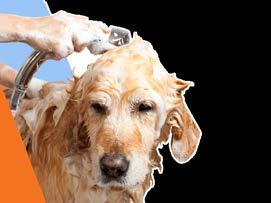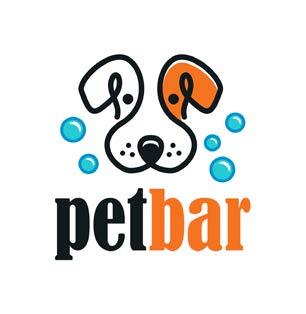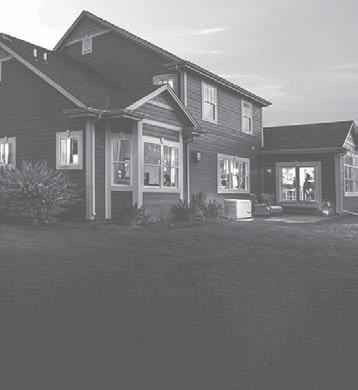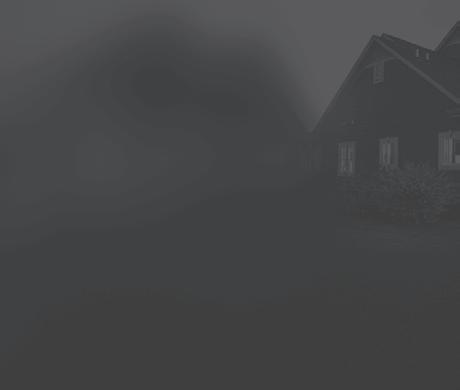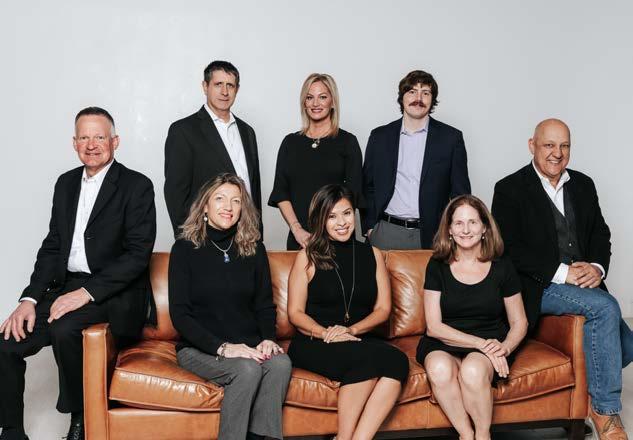
13 minute read
MEET MAXWELL RASOR
Be a reason more women survive heart disease.
When it comes to fighting heart disease in women, we need women like you. Each year, one of three women will die of heart disease, which is why Texas Health, together with Go Red for Women®, need your help. We want you to get the facts and take control of your health with our free heart health assessment. And then, encourage every woman you know to do the same. We’ll help you learn your risks and what you can do about them. That’s how we care more. Join
It was an unseasonably warm November day, and the openair market at Greenville and Oram was packed with people. Among the vendors offering all sorts of wares, like custom skateboards or homemade hot sauce, there was a tent filled with wire sculptures of animals.
Maxwell Rasor, the man who made the sculptures, sat at the back of the tent, twisting a bird into life with a pair of pliers and looking just as wiry as his creations. He sat the bird down every time people stopped by the tent in order to greet them. His hands were stained black from the oil coating the wires, so handshakes were out of the question, but he offered every guest a wave and a hello. Then, he waited patiently to see if they had any questions about the art.
Here are the answers to the most common ones: Each sculpture takes about an hour to make, maybe longer if it’s particularly detailed. Birds and fish are the most popular with customers, because sporadically people will recognize their favorite species. Dogs are a popular choice, too, but Rasor says that a lot of the dogs he makes are by commission, so customers can receive a sculpture based on the likeness of their own pet.
One of the other common questions is how Rasor conceptualizes each creation in a 3D space. That question is trickier to answer, because it comes to Rasor naturally. But part of it is because he’s been making sculptures for almost his entire life.
“My dad was a sculptor growing up, so I was always kind of into it,” Rasor says. “I kind of grew up sitting in his lap with him bending wire right in front of my face, and it just kind of caught on.”
Rasor was born and raised in Oak Cliff, and he made his first creations when he was about 6 years old. That is also about the same time his father stopped sculpting; Rasor’s parents got a divorce, and his father had to focus on being a single parent. But Rasor never stopped, and he attended W.E. Greiner and Booker T. Washington for middle and high school to keep honing his artistic skills.
After high school, he moved with his then-girlfriend Ariel Reno, who is now his wife, to Austin. They moved around Texas as Reno, who designs prosthetics, completed residencies. Her last residency was in San Antonio, and when she completed it, she received a job offer in the city. A few years later, she gave birth to the couple’s first child. When Reno returned to work, Rasor would stay home to watch their son, but he continued to sell his artwork, too.
“My wife is definitely the breadwinner in our family,” Rasor says. “She was like, ‘I can make more money than you can, but make what you can.’ And I do. I watch the kid and save cash and make sure he is learning how to read.”
Then, when their son was a few months old, the COVID-19 pandemic began.
“And so I spent two years just making stuff,” Rasor says.
Rasor and Reno moved to East Dallas in October 2021 to be closer to Reno’s parents.
“I think the pandemic changed everything here,” Rasor says of Dallas’ art scene. For example, before he moved away, there were few vendor markets. “When I got back to Dallas, they were just all over the place, which is just awesome.”
In addition to the vendor markets, Rasor says there’s a strong network of artists involved in various collectives around the city, and galleries will occasionally do open calls in order for local artists to showcase their works.
For Rasor, the biggest challenge to being an artist is not selling his works, but finding time to make them. His first priority, of course, is raising his son. Reno is pregnant with the couple’s second child, and Rasor knows a second kid will make life even more hectic.
“Just having a 3-year-old, he eats up 90% of my time. I have about an hour and a half that he takes a nap where I can work quietly,” Rasor says. Then, when Reno gets home, the family has a sit-down dinner and spends time together until Reno and their son go to bed.
“Then I start working again. I work until the late hours in the night, and then I go to sleep, and I don’t get enough sleep, and then I wake up at 7 o’clock all over again.”
But when asked if he still finds his work rewarding despite the stresses associated with it, Rasor doesn’t hesitate to answer.
“Oh, yeah. I would never be in a situation where I couldn’t make stuff all the time,” Rasor says. “I am, at my core, a maker.”
Rasor’s home is filled with his artwork — not just his wire sculptures, but other creations, like wind-up automatons and kaleidoscopes. Rasor doesn’t usually make anything that he wouldn’t display in his own house, which is a good thing, because that’s where he keeps most of his artwork before he takes it to market.
“If I didn’t have to, I wouldn’t sell anything that I make,” Rasor says. “I would just give it to people if I wouldn’t get in trouble for it. But I have to pay the bills.”
He sees his love of creation reflected in his son.
“My kid is already like a little builder guy,” Rasor says. “Like, I can barely give him toys. He’s just taking them apart immediately, because he (has) spent the first two years of his life watching me cut wooden cogs out.”
Rasor’s creations are best enjoyed in person. If you ever get the chance, be sure to stop at the Underground Market, which is held every Sunday at Greenville and Oram, and look for the wiry man with his palms stained black.
Courtney Kelly is an engineer, but as a child, it seemed certain she would be a veterinarian.
At the time, that career seemed like a natural fit for her. The farmhouse she grew up in always had an animal presence; her family owned several dogs, chickens and ferrets. Her father, a farrier, kept horses in the backyard. When veterinarians came to visit the horses, Kelly would shadow them and learn all she could about their job.
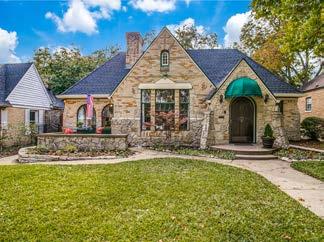
The farmhouse Kelly grew up in, known around her neighborhood as the Red Barn House, was located in New Orleans. Hurricane season was an unavoidable aspect of living in southern Louisiana, and the Kelly family was used to evacuating almost every year. Courtney was the family’s designated hurricane tracker. She would get maps provided at Popeyes and listen to the news to find out a storm’s longitude and latitude, and then she would plot out the storm’s course on her map.

One storm she didn’t pay much mind to formed early in her sophomore year of high school. It began as a tropical depression in the Bahamas, and after it became a hurricane, it weakened as it crossed Florida — but then it drew strength from the warm waters of the Gulf of Mexico and transformed into the infamous hurricane that decimated New Orleans.
“Katrina was not on my radar at all, at least to the extent that the intensity that the storm ended up being,” Kelly says.
Still, as they did with any hurricane, her family packed up and drove north to wait out the storm in Baton Rouge. Her mother and sister packed as much as they could into one car, and Kelly rode with her dad in the truck pulling a trailer full of their horses.
As she sat in bumper-to-bumper traffic, Kelly didn’t yet know that she would never live in the Red Barn House again.
“Here we are on the bridge, evacuating, all of these people having to leave their homes, but we really had no idea of how bad the city was going to be devastated,” she says.
Kelly spent the next few months at her aunt’s home in Baton Rouge. Kelly’s other relatives from New Orleans evacuated to Baton Rouge, too, and initially there were 24 people crammed into the threebedroom house, usually jockeying for a spot in front of the television as scenes of the destruction filled the news broadcasts.
“Everybody was just kind of glued to the TV,” Kelly says.
The Kelly family was relatively lucky. The Red Barn House only had two feet of water inside and the family ultimately repaired the damage to it, but Kelly’s parents decided to relocate to Baton Rouge for the remainder of their daughters’ high school years. The next summer, Kelly’s parents encouraged her to attend a summer camp at Louisiana State
University called “Recruiting into Engineering for High Ability Minority Students.”
“Basically, that program did its job,” Kelly says with a laugh. “It introduced me to all of these different engineering concepts, and civil engineering just kind of stuck with me.”
Lamar University. Kelly lives in East Dallas and works as a project manager for a construction company, but she still drives back to Louisiana fairly often to visit her parents. On one such drive, she was listening to a podcast about singer Janelle Monáe. On the podcast, Monáe encouraged other Black women to tell their own stories.
“I thought, ‘You know what? She’s right. I have a story to tell,” Kelly says. On that drive to Louisiana, Kelly began dreaming about the book that would soon become Celeste Saves the City , a semi-autobiographical children’s book about a young girl who has to flee Hurricane Katrina, only to grow up, become a civil engineer and devote her life to ensuring such devastating floods never occur again. Celeste’s solution is wetland restoration, a form of “green infrastructure” that would help maintain Louisiana’s eroding coastline.
Over the next two summers, Kelly attended engineering programs at Worcester Polytechnic Institute and Elmhurst College. In the process, she left her dreams of becoming a veterinarian behind in favor of a career that she thought could help her hometown recover.
“I was like, ‘Alright, civil engineering is the way. If there’s going to be a thing that I can learn, where maybe I’ll get some knowledge (about how) I can somehow help New Orleans in the future, civil engineering is it,’” Kelly says.
Kelly went on to receive her bachelor’s and master’s degrees in civil engineering from SMU. She also received an MBA from
It took several years to go from the idea Kelly had on her drive to the book now on shelves. After she finished the manuscript, there was the matter of finding an illustrator and a publisher. When she could not find a company willing to publish the book, Kelly decided to create her own publishing company. Then, she had to broker deals with retailers. But those who know Kelly say it’s no surprise that she persevered through every challenge she faced.
“She is what I call a grinder,” says Karla Nivens, one of Kelly’s friends and mentors who has also written her own book. “She has the ability to problem solve, and then turn that into something creative, and then bring whatever that is to life.”
Kelly’s parents are proud of her achievements, but they’re not surprised that she’s accomplished them.
“We always considered her a child before her time,” says Karen, Courtney’s mother. “All of this, she found her own illustrator, she wrote the book and edited it and had individuals read it and edit it — she essentially had that dream, and she made it happen.”
Karen refers to Celeste almost interchangeably with Courtney, noting the striking physical resemblance between the two. That resemblance, according to Courtney, is intended to inspire the young Black girls who read the book. According to the National Science Foundation, Black women are currently severely underrepresented in Kelly’s field, making up only about 1.6% of those in science and engineering occupations. Celeste Saves the City demonstrates that despite the asymmetry, Black women can find success and satisfaction in civil engineering.
“I think about how many books that I picked up when I was a kid where I actually could see myself reflected in the pages, and what impact that can have on someone,” Kelly says.

While Kelly said she would love all the girls who pick up the book just to become engineers, her main goal is to encourage them to pursue their passions, whatever they might be.
“I want them to know that things are going to be difficult,” Kelly says, “but you can do it, like Celeste did it.”
Story by ANDREA HANCOCK
IT WAS A BUSY AFTERNOON AT Dallas United Crew’s boathouse on White Rock Lake, even though no one was preparing to get on the water. High schoolers pulled down rowing machines from where they were stored vertically along the walls. Middle schoolers milled about, chatting with their friends, and then reluctantly headed toward the walking trail outside for a warm-up jog. Intermittently, coaches give orders, explaining the day’s workout to high schoolers or doing their best to wrangle the middle schoolers. The boathouse is loud with chatter and the whir of the rowing machines’ fans; the high ceiling and carbon fiber boats bounce back every noise.
In the middle of it all was Nan Miller. Miller has been DUC’s middle school coach for the past five years, and if there’s anyone who knows how to navigate the din, it’s her. If her shoulder-length shock of straight white hair wasn’t enough to make her stand out in a crowd, the megaphone she wields makes her impossible to miss. When the middle schoolers returned from their jog, she explained the plan for the day, which was the last practice of the fall season: a 250-meter sprint on the rowing machines, a test of how much fitness the rowers had built over the past few months.
The middle schoolers wore different expressions at the news: some excited, some nervous, some unimpressed. Some of them have joined the team through RowDallas, a program DUC has created in partnership with Dallas ISD and Dallas Park and Recreation. RowDallas invites kids from two Title I schools in the city to join the middle school crew, and if they continue to row in high school, DUC provides them with unique scholarship opportunities.
Half an hour later, when it’s time for the 250-meter test, half of the middle schoolers sit on rowing machines, while the other half whoop and cheer their teammates on. You’d never guess who is and isn’t from the RowDallas program — at the boathouse, and out on the water, the rowers are one cohesive unit. It’s the first year of rowing for all of them, so they’re all learning together.
“I always say, ‘There’s no equalizer like the boathouse,’” Miller mentions.
Rowing is traditionally reserved for the wealthiest and most privileged of athletes. For example, the Henley Royal Regatta, one of the most prestigious rowing races in the world, used to explicitly exclude anyone “who is or has been by trade or employment for wages a mechanic, artisan or laborer.” Even today, the expensive upkeep of rowing boats and equipment often makes the costs to join the sport exorbitantly high. Traditionally, it is also an overwhelmingly white sport — only five Black rowers have ever represented the United States at the Olympics.
“From a bigger picture standpoint, we are not drawing our best athletes because of the lack of inclusion that we have in the sport,” says Austin Brooks, the executive director of DUC. “Our hope is down the line, as RowDallas grows and improves, that we’re really drawing the best athletes into our program (and) promoting them to get recruited to college.”
Not only does RowDallas give middle schoolers the opportunity to row, but the program also provides tutoring. The RowDallas students meet weekly at the Harry Stone Recreation Center and hone skills they might be struggling with at school, particularly in math. Jacqueline
Freeman, a former CPA who rows in the DUC’s masters program, is one of the tutors who volunteers to help out. She says that their sessions usually focus on helping students with foundational skills they need to start learning more advanced concepts like algebra.
“It’s not a drudgery type of tutoring,” Freeman says. “It’s something that I believe firmly; if you’re passionate about what you’re teaching, they’re going to pick up your passion for it as well.”
In addition to math tutoring, RowDallas students also work on science projects, which Freeman says the kids have a lot of fun with. Last year, the project was thinking of a problem astronauts might encounter while living in a space station, and how they might solve that problem. This year, with the help of an SMU computer science student named Nicole Sood, the students learned about coding. Sood walked students through demonstrations, showing them how changing small variables could make or break codes.
“It really got their attention, and then they were asking a lot of questions,” Sood says.
Sood believes STEM is best taught in a hands-on fashion, so before the last practice of the season, she arranged a field trip for students to visit the Deason Innovation Gym at SMU. There, students got to experiment with 3D printers and laser cutters. Solving a math problem was no longer about getting good grades; suddenly, it was in order to configure a laser. Sood was proud of how students’ eyes would light up when they brought the designs they had created to life through math and science.
“They got to see some other potentials of engineering that isn’t just like, ‘Solve this math problem to get this answer.’” Sood says. “It’s like, ‘We’re solving this math problem so we can cut this out and physically have it with us.’”
In the future, Miller hopes that DUC can expand the RowDallas program into more schools and provide more opportunities to the kids in the program, like offering swim lessons. In the meantime, she focuses on fostering a love of the sport. She emphasizes the psychological benefits rowing can provide besides the physical aspect, like being out in nature or learning about teamwork.
“Nothing about rowing is about you,” Miller says. “You can’t do anything if you’re not working together, and that’s why it’s called the ultimate team sport.”
